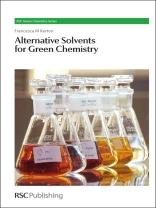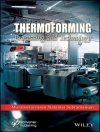Everyone is becoming more environmentally conscious and therefore, chemical processes are being developed with their environmental burden in mind. This also means that more traditional chemical methods are being replaced with new innovations and this includes new solvents. Solvents are everywhere, but how necessary are they? They are used in most areas including synthetic chemistry, analytical chemistry, pharmaceutical production and processing, the food and flavour industry and the materials and coatings sectors. However, the principles of green chemistry guide us to use less of them, or to use safer, more environmentally friendly solvents if they are essential. Therefore, we should always ask ourselves, do we really need a solvent? Green chemistry, as a relatively new sub-discipline, is a rapidly growing field of research. Alternative solvents – including supercritical fluids and room temperature ionic liquids – form a significant portion of research in green chemistry. This is in part due to the hazards of many conventional solvents (e.g. toxicity and flammability) and the significant contribution that solvents make to the waste generated in many chemical processes. Solvents are important in analytical chemistry, product purification, extraction and separation technologies, and also in the modification of materials. Therefore, in order to make chemistry more sustainable in these fields, a knowledge of alternative, greener solvents is important. This book, which is part of a green chemistry series, uses examples that tie in with the 12 principles of green chemistry e.g. atom efficient reactions in benign solvents and processing of renewable chemicals/materials in green solvents. Readers get an overview of the many different kinds of solvents, written in such a way to make the book appropriate to newcomers to the field and prepare them for the ‚green choices‘ available. The book also removes some of the mystique associated with ‚alternative solvent‘ choices and includes information on solvents in different fields of chemistry such as analytical and materials chemistry in addition to catalysis and synthesis. The latest research developments, not covered elsewhere, are included such as switchable solvents and biosolvents. Also, some important areas that are often overlooked are described such as naturally sourced solvents (including ethanol and ethyl lactate) and liquid polymers (including poly(ethyleneglycol) and poly(dimethylsiloxane)). As well as these additional alternative solvents being included, the book takes a more general approach to solvents, not just focusing on the use of solvents in synthetic chemistry. Applications of solvents in areas such as analysis are overviewed in addition to the more widely recognised uses of alternative solvents in organic synthesis. Unfortunately, as the book shows, there is no universal green solvent and readers must ascertain their best options based on prior chemistry, cost, environmental benefits and other factors. It is important to try and minimize the number of solvent changes in a chemical process and therefore, the importance of solvents in product purification, extraction and separation technologies are highlighted. The book is aimed at newcomers to the field whether research students beginning investigations towards their thesis or industrial researchers curious to find out if an alternative solvent would be suitable in their work.
Inhaltsverzeichnis
1 – Introduction;
Introduction;
Safety Considerations, Life Cycle Assessment and Green Metrics;
Environmental, Health and Safety (EHS);
Life Cycle Assessment (LCA);
Solvents in the Pharmaceutical Industry and Immediate Alternatives to Common Laboratory Solvents;
Solvent Properties Including Polarity;
Summary;
References;
2 – ‚Solvent-Free‘ Chemistry;
Introduction;
Chemical Examples;
Inorganic and Materials Synthesis;
Organic Synthesis;
Microwave-assisted reactions;
Photoreactions;
Summary and Outlook for the Future;
References;
3 – Water;
Introduction;
Biphasic systems;
Chemical Examples;
Extraction;
Chemical Synthesis;
Metal mediated and catalyzed reactions;
Microwave assisted reactions;
Biocatalysis;
Carbon dioxide fixation;
Materials Synthesis;
High-temperature, superheated or near-critical water;
Summary and Outlook for the Future;
References;
4 – Supercritical Fluids;
Introduction, Chemical Examples;
Supercritical and Liquid Carbon Dioxide, Solubility in Supercritical Carbon Dioxide;
Extraction;
Chemical synthesis;
Heterogeneous catalytic reactions in sc CO2;
Biphasic CO2 – aqueous and CO2 – ionic liquid systems;
Biocatalysis in sc CO2;
Materials synthesis and modification;
Supercritical Water and Near-Critical Water;
Extraction and Analytical Chemistry;
Chemical synthesis;
Materials synthesis;
Supercritical Water Oxidation (SCWO);
Summary and Outlook for the Future;
References;
5 – Renewable Solvents;
Introduction;
Chemical examples;
Alcohols including Glycerol;
Esters;
Biodiesel;
2-Methyltetrahydrofuran (2-Me THF);
Terpenes and Plant oils;
Renewable alkanes;
Ionic liquids and eutectic mixtures prepared from bio-feedstocks;
Summary and Outlook for the Future;
References;
6 – Room Temperature Ionic Liquids and Eutectic Mixtures;
Introduction;
Chemical Examples;
Extractions using RTILS;
Electrochemistry in RTILS;
Synthesis in RTILS;
Biocatalysis in RTILs;
Polymer synthesis and processing;
Selected unconventional uses of RTILs;
Summary and Outlook for the Future;
References;
7 – Fluorous Solvents and Related Systems;
Introduction;
Overview of fluorous approach;
Fluorous solvent polarity data, solubility and miscibility data;
Fluorous catalysts and reagents;
Chemical Examples;
Fluorous extractions and fluorous analytical chemistry;
Fluorous reactions;
Fluorous Biphase Catalysis;
Continuous Fluorous Biphase Catalysis;
Fluorous Biological Chemistry and Biocatalysis;
Fluorous Combinatorial Chemistry;
Fluorous Materials Chemistry;
Summary and Outlook for the Future;
References;
8 – Liquid Polymers;
Introduction;
Properties of Aqueous PEG solutions;
Chemical Examples;
Polyethylene glycol and Polypropylene glycol as non-volatile reaction media;
Polyethylene glycol as a reaction solvent;
Liquid polyethylene glycol in organic synthesis;
Polyethylene glycol in aqueous biphasic reactive extraction;
Polyethylene glycol in the synthesis of materials;
Poly(dimethylsiloxane) as a non-volatile reaction medium;
Summary and Outlook for the Future;
References;
9 – Tunable and Switchable Solvent Systems;
Introduction;
Chemical Examples;
Gas Expanded Liquids;
Solvent properties of CXLs;
Applications of CXLs;
Solvents of Switchable Polarity;
Switchable Surfactants;
Solvents of Switchable Volatility;
Thermomorphic and Related Biphasic Catalysis;
Summary and Outlook for the Future;
References;
10 – Industrial Case Studies;
Introduction;
Examples;
Selected applications of water as a solvent and reaction medium;
Selected applications of carbon dioxide as a solvent and reaction medium;
Selected applications of room temperature ionic liquids in industry;
Summary and Outlook;
References;
Subject Index
Über den Autor
Francesca M Kerton is Assistant Professor (Green Chemistry) in the Department of Chemistry, Memorial University of Newfoundland, Canada. She gained her BSc in Chemistry with Environmental Science at the University of Kent and her Ph D in Chemistry at the University of Sussex. For 2 years she was a Postdoctoral Fellow at the University of British Columbia in Canada followed by a Lecturer, then Royal Society University Research Fellow, at the University of York, UK. She has contributed to many books and journal articles and her research interests are green chemistry including solvent replacement, catalysis and renewable feedstocks.












